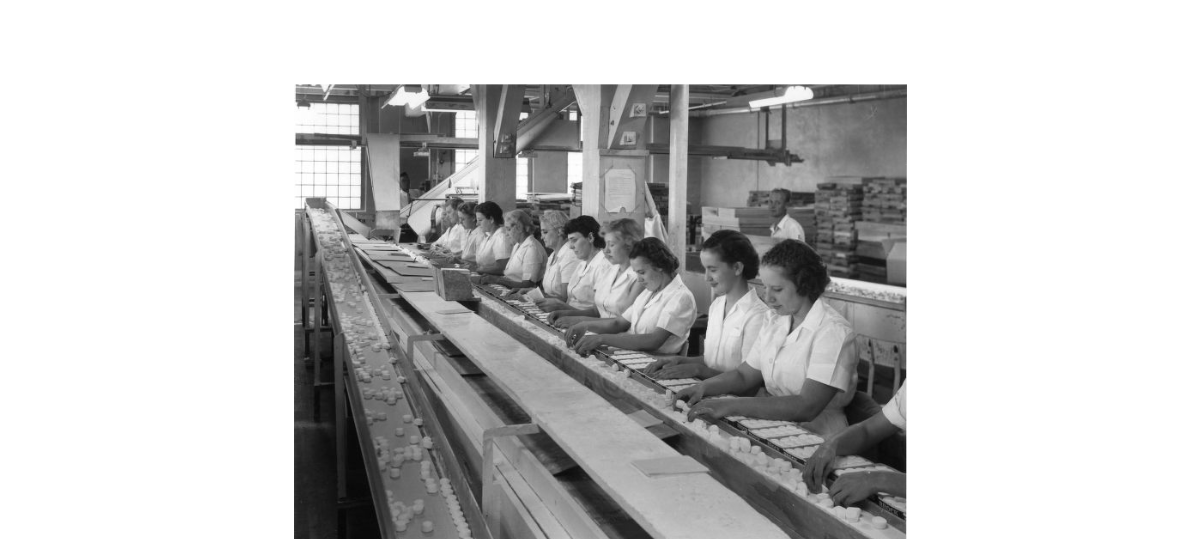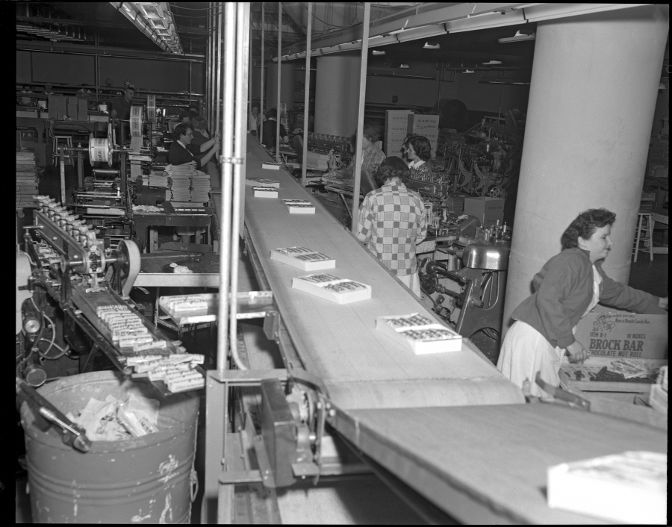
A Deleterious Ingredient!
What, you ask, is a deleterious ingredient? Basically, it is any foreign object or ingredient in food that can adversely affect your health. When marbles were inserted into candy during manufacturing, they became a deleterious ingredient!
17 Years?
In the recent post Dragons and Farbles With A Pinch of Pewter we note that it once took us seventeen years to identify a 1¼” ceramic ball. We found the ball on the stone forecourt of an ancient hisn or fort in Kalba, Sharjah, United Arab Emirates. The old fort is directly on the Gulf of Oman.
Well, it happened again! We have been looking for evidence of chocolate covered marbles since seeing a photo of an empty box. And while we have not yet found them yet, we did make an astounding discovery: Marshmallow covered marbles. Impossible?
“The impossible could not have happened, therefore the impossible must be possible in spite of appearances.” ― Agatha Christie, Murder on the Orient Express 1934.
Chocolate Covered Marbles
In 2014 the Blog named “Marbles in Candies” was posted in The Marble Connection[1]. We followed the story with genuine interest because we had seen pictures for a long while and wondered about these.
In Everett Grist’s Big Book of Marbles, 2nd Ed. (Paducah, KY: Collector Books 2000) on page 157 there is a photograph of a cardboard box (plate 341) . The notation reads: “A box once contained 120 chocolate-covered marbles from the Brock Candy Company of Chattanooga, Tennessee. A 1935 date is found on the inside. They were actually chocolate-covered marbles from which you ate the covering and found yourself with a set of marbles. NPA From the collection of Roy Katskee.”
There is a second photograph in Stanley Block, Ed., Marble Mania® (Atglen, PA: Schiffer Publishing Ltd), 2010, page 220. The notation in Block reads” “Chocolate Covered Marbles Box. $200 -$400. Courtesy of Block’s Box.”
There is a second photo in Block’s book: “Chocolate Covered Marbles Box. (Side View) $200 -$400. Courtesy of Block’s Box.” On this box we can clearly read that the box contains 120 chocolate covered marbles made by Brock Candy Company.
Attribution
The photograph in Grist is attributed to Roy Katskee. In The Marble Connection Katsakee reports that he bought “…this box in the mid 90’s at the Columbus, Ohio show.”[2] The Block photographs are attributed to “Block’s Box” .
Well, inquiring minds want to know. We have researched this whole concept of putting marbles inside candy for a few years. We recently turned to sources in the Business Reference Services in the Library of Congress (LOC) for help.
The Business Reference Librarian emailed us: “Yes, it seems like the [marble] collectors themselves are the only source of the information I could find. It could be that this product was only produced during that one year [1935], or maybe it was just some sort of promotional product.
Rings of Chocolate?
From the photos[3], it looks like the chocolate was just a ring around the visible marble (I imagined a much more dangerous chocolate covered marble!). The company [Brock Candy Company] was private at the time and it was obviously quite a long time ago, so there may not be extant company records either.”
The Librarian, writing from a completely unbiased vantage point outside the marble collecting community, made two good points: the [marble] collectors themselves are the only source of the information. And when you look at the box of chocolates it appears that there are candy (chocolate?) rings pictured on top of the box. Maybe the entire marble was not covered in chocolate.
The Librarian’s analysis started us thinking again, and it turned our attention to Tennessee and to Chattanooga where Brock made candy for decades.
A Sweet Success Story
The Brock Candy Company dates to 1906 when William Emerson Brock purchased the Trigg Candy Company of Chattanooga.[4]

EPB Archive/ ChattanoogaHistory.com: 1952; Thank you, Sam Hall; CHATTANOOGAHISTORY.COM
Brock Candy Company was always a family-owned and private company. The Brock family’s philosophy was centered around the premise of personal and corporate integrity. They believed that each person should be treated with respect and dignity.[5]
The Brock philosophy translated into their being a contributing and essential part of the Chattanooga community for decades. They were dedicated to their employees, who once numbered 600, through many lean years.[6]
Just as one example of the Brock community spirit: at Christmas 1920 they provided 750 lbs of candy at cost plus a cash donation to the poor children of Chattanooga through the Billy Sunday Christmas tree.[7] There are many more examples of the Brock family’s generosity recorded in Chattanooga.
“Boxing Marshmallows at the Brock Candy Company in Chattanooga, Tennessee”[8] 1952
Marshmallow Covered Marbles?
We continued our Brock Chattanooga history research and found Erin Ryan, Special Collections, University of Tennessee at Chattanooga Library. Erin sent the following email and attached relevant pages from A Corporate Family History of The Brock Candy Company Chattanooga.“ On p. 31, in the chapter that covers the years 1934-1941 [Chapter 4 “On the Road Again”], there are three paragraphs about a Brock Candy Company promotion involving Brock selling marshmallow-covered marbles (after purchasing a boxcar full of marbles).”
We were gobsmacked! Not chocolate-covered marbles, but marshmallow-covered marbles? We have no idea who provided the boxcar load of marbles from West Virginia. The marbles included, according to Brock Candy, such favorite marbles as “peadbabs”, “soapies”, and “agates.” Okay, we are confident that we know what a glass agate is. But what about the other two?
In Block’s Marble Mania® Glossary on page 333 we learn that a “peadab” is a small clay marble of little value. There used to be a very similar word in the lexicon of rural Northwest Georgia, and it meant the same thing as Block defines. If some of the Brock marbles really were clay, this muddies the water even more. Marshmallow covered clay?
Finally, we can find nothing on Soapie marbles. Can anyone tell us what they are? We look forward to hearing from you and perhaps you can send us a photograph?
Air, Sugar, Corn Syrup, & Gelatin
Quick! Close your eyes and describe a marshmallow. Ok, now tell us the difference between marshmallows and marshmallow candy. Any idea where the word itself came from? At the start of this research all Larry knew about marshmallows is that Jo sets them afire over the campfire and then puts the charred lump in her mouth while it is still flaming!
A typical marshmallow contains sugar, corn syrup, and gelatin, plus some air. That’s it. “A marshmallow is basically a foam that’s stabilized by gelatin,” says Richard Hartel, a food engineer at the University of Wisconsin–Madison. In marshmallows, the foam is made up of air suspended in the liquid sugar mixture.[9]
Believe it or not, there really is a “mallow” plant! Marshmallow was originally made from the mallow plant (Athaea officinalis) which grows wild in marshes. Hence the name marsh mallow. There is a photograph of the mallow plant and its beautiful blossoms at the National Confectioners Association website where we found this information and the following paragraphs.
Where It Comes From
“The term marshmallow was derived both from the native home of the plant and the plant name. Mallow is native to Asia and Europe and has been naturalized in America. The Egyptians squeezed sap from the mallow plant and mixed it with nuts and honey.”[10] No one knows what this candy looked like: can you imagine the Pharaohs munching on marshmallows?
“The French were introduced to marshmallow in the early to mid-1800s. Owners of small candy stores whipped sap from the mallow root into a fluffy candy mold. This time-consuming process was typically done by hand. Candy stores had a hard time keeping up with the demand.
Candy makers started looking for a new process to make marshmallows and found the starch mogul system in the late 1800s. It allowed candy makers to create marshmallow molds made of modified cornstarch. At this same time, candy makers replaced the mallow root with gelatin and this created the marshmallow stable form.
Marshmallows were introduced and popularized in the United States in the early 1900s, after the new manufacturing process was developed.” Brock first made marshmallow and jelly candies in the 1920s.
The Marshmallow Covered Marble Promotional
Now, back to Chattanooga and the Brock Candy Company in the 20th century. We return to Phillip R. Bellury’s book A Corporate Family History of The Brock Candy Company Chattanooga, Tennessee (1906 – 1994) page 30. Bellury tells us about the marble marshmallow promotion in the 1930s.
At that time Brock candy was sold in wooden pails which sat on the merchant’s counter. The pail had a transparent lid and when the customer made a selection the merchant opened the lid and scooped the candy into a bag. As a promotion Brock bought a boxcar load of .22 rifles and offered them to jobbers who bought a $6.00 pail of chocolate covered peanuts.
Are You Ready For This?
In the 1930s, “Another popular promotion occurred after the company began to box candies.” After buying the boxcar of “Peadab”, “Soapies”, and “Agates” Brock made marshmallow candy with “…marbles actually put inside marshmallow”!
We don’t know how many candies were in each box (we cannot imagine that there were 120 like the chocolate covered marbles). Bellury tells us that each box held an assortment of the three types of marbles. We have no idea whether employees selected the marbles for each box or if the selection was random.

EPB Archive/ ChattanoogaHistory.com: 1952; Thank you, Sam Hall; CHATTANOOGAHISTORY.COM
No, they are not boxing marshmallow marbles in this photograph! This shot is about twenty years after the promotion. We have never seen a box which contained marshmallow marbles from the 1930s. This photograph, however, does show a production line inside the company. We think they are boxing candy bars here.
During the marshmallow marble promotion “one piece sold for a penny, and many people, especially children, kept buying candy until they got an Agate.” Agates were “the most expensive” in the lot.
The Marshmallow Covered Marble Promotional Ended Abruptly
Anyone want to guess why it all came to a screeching halt? Right. “The promotion ended abruptly when a child in Mississippi bit down too hard on a marble and knocked a tooth out. A lawsuit followed, and the [Federal] government ordered the company to stop production.”
We have not located the actual lawsuit transcript. However, we found an “FDA Notice of Judgment Collection” relevant to Brock. The Foods and Drugs Administration was responsible for these judgments from 1908 – 1943 which is the time period of the Brock promotion. The judgment is a summary of the final outcome of a court case for manufacturers and products.[11]
Notice of Judgment 20120[12]
We quote the Judgment heading as it actually reads:
“Adulteration of marshmallow marble candy. U.S. v 8 Boxes of Brock’s Marshmallow Marbles. Default decree of condemnation, forfeiture, and destruction. (F&D No. 28384. Sample No. 18856-A)
This action was based on the shipment of a quantity of marshmallow candy in each piece of which was concealed a hard marble.
On June 18, 1932, the United States attorney for the Northern District of Texas, acting upon a report by the Secretary of Agriculture, filed in the District Court of the United States for the aforesaid a libel praying a seizure and condemnation of eight boxes of marshmallow marble candy at Dallas, Tex., alleging that the article had been shipped in interstate commerce on or about February 9, 1931, by Brock Candy Co., from Chattanooga, Tenn., to Dallas, Tex., and charging adulteration in violation of the Food and Drugs Act.
…[it was alleged] the article was adulterated in that each piece of candy contained an added deleterious ingredient, a hard marble, which might have rendered the said article injurious to health.
On September 28, 1932, no claimant having appeared for the property, judgment of condemnation and forteiture was entered, and it was ordered by the court that the product be destroyed by the United States marshal. R.G. Tugwell, Acting Secretary of Agriculture.”
But Wait! There’s More
We were astounded by this case. Even more astounding to us is judgment 20119 which was printed just above the Brock judgment. Again, we are looking at the adulteration of marshmallow candy (32 boxes this time), but by the National Marshmallow Candy Company in Saint Louis! Hard marbles were covered with marshmallow.
While we don’t know which company supplied the Brock marbles, we can only imagine that Alox Marble Company (1919 – 1989) supplied the marbles to National. Were marbles in marshmallow an independent initiative from two candy companies? At about the same time?[13] Is it possible that other candy companies attempted the same promotion?
Circular Reasoning
Opening this post, we started with an overview of chocolate covered marbles. We looked for any type of candy using marbles and we found marshmallow covered marbles.
We are of different minds about chocolate covered marbles. Brock introduced chocolate covered cherries in 1935 and their cherry cordials remain a Brach seasonal bestsellers. E. J. Brach & Sons and Brock Candy Company merged in 1994.
Differing Views
Larry feels that by the mid 1930s Brock did have experience with covering objects with chocolate and other candies. But it simply does not seem reasonable (the reasonable person standard) to him that only two or three years after the marshmallow debacle, lawsuit, and Federal Judgments, that the Company would initiate another chocolate covered anything except cherries and peanuts (tons of peanuts).
Brock still had tons of marbles on hand in 1935. And we wonder where they all went. And one final word on the box. Chocolate cherries come nine to twelve to a full box. Could the chocolate covered marbles box really hold 120 glass and clay marbles? Were the marbles PeeWees?
We can find no Notices of Judgment against Brock for the chocolate covered marbles. They would have violated the Foods and Drugs administration’s rules as surely as marshmallow marbles, wouldn’t they?
Jo believes that, based on studying the box lid, the chocolate was actually a ring around the marble and the marble was placed in the middle of the ring. The marble was mostly visible. This would eliminate the element of surprise which was so critical to the marshmallow marbles.
But Jo’s position is in line with the one taken by the Business Reference Services Librarian at the Library of Congress: “From the photos, it looks like the chocolate was just a ring around the visible marble….” This step may well have kept Brock from having legal problems with this promotion.
The Hunt Is Not Over!
And so we leave it. The hunt for chocolate covered marshmallows goes on. We hope we have given you something to think about. If interested, you can follow up on our footnotes and dive deeper into the whole idea of candy covered marbles.
As always, we welcome your comments and photographs.

Two roads diverged in a wood, and I—
I took the one less traveled by,
And that has made all the difference.
Robert Frost, The Road Not Taken
Featured Photo: Courtesy of: EPB Archive/ ChattanoogaHistory.com: 1952; Thank you, Sam Hall;
CHATTANOOGAHISTORY.COM
- https://marbleconnection.com/topic/19142-marbles-in-candies/ (1/29/2023). We posted a short note about chocolate covered marbles in an earlier story: “This made us think of the 1935 boxes of 120 chocolate-covered marbles from the Brock Candy Company in Chattanooga, Tennessee. We know that chocolate covered marbles are hard to imagine, but reference Plate 341 in Everett Grist’s Big Book of Marbles on page 157.” As Real As A $3.00 Bill! https://thesecretlifeofmarbles.com/as-real-as-a-3-00-bill/ 1/29/2023↑
- He also reports the name of the person from whom he bought it. This name can be found in The Marble Connection.↑
- The Reference Librarian is almost certainly referring to the two photographs in Grist & Block. ↑
- Mielnik, Tara Mitchell. “Brock Candy Company.” Tennessee Encyclopedia. https://tennesseeencyclopedia.net/entries/brock-sandy-company/ 2/10/2023 ↑
- Bellury, Phillip R. A Corporate Family History of The Brock Candy Company Chattanooga, Tennessee (1906 – 1994). Np: The Brock Candy Company, 1994. Special thank you to Erin Ryan, Special Collections, University of Tennessee at Chattanooga Library. Erin was dedicated in her search for information for us and she is the one who found this source. ↑
- In one day alone these workers produced 200,000 pounds of candy! ↑
- The Chattanooga News [volume] (Chattanooga, TN), 1891 – 1939. December 17, 1920, Afternoon Edition, Page 23, Image 13. ↑
- https://teva.contentdm.oclc.org/customizations/global/pages/about.html ↑
- https://cen.acs.org/food/food-science/s-marshmallows-ingredients-work-together/99/web/2021/04 2/11/2023 ↑https://www.tastingtable.com/1068945/the-plant-marshmallows-were-originally-made-from/ 2/11/2023 ↑
- https://fdanj.nlm.nih.gov/ 2/9/2023 ↑
- https://fdanj.nlm.nih.gov/catalog/fdnj20120 2/11/2023 ↑
- You can read the complete judgment against National at https://fdanj.nlm.nih.gov/catalog/fdnj20120 2/11/2023 ↑

